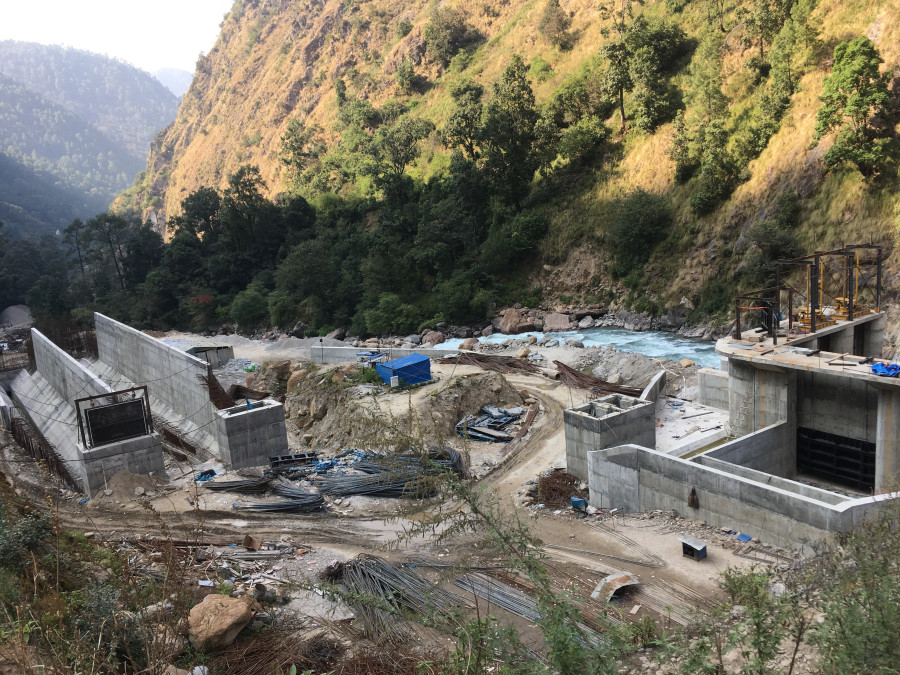Columns
Financing large hydro
The government must act as an enabler instead of borrowing to build hydro power plants.
Bishal Thapa
Large hydro power plants are back in business in Nepal.
The government is once again offering to lead the development of large hydro power plants and has approached the World Bank and the Asian Development Bank (ADB) for financing.
The government should stay out of financing hydro power plants, and development partners should be weary of lending money to the Nepal government for such plants. The government’s capacity to borrow and the ability of development partners to lend would be better utilised in areas such as health, education and social infrastructure where such investments are urgently required, socio-economic returns are higher and private investments are unlikely.
The business of building hydro power plants should be left to the private sector.
Proposal
The government has revived the pursuit of the Upper Arun hydro power plant, a 1,061-megawatt run-of-river project in Sankhuwasabha district that is projected to require an investment of $2.2 billion.
Last month, at the 2023 annual meeting of the World Bank Group in Marrakech, Morocco, Finance Minister Prakash Sharan Mahat invited the World Bank and other development finance partners to consider lending to Nepal for the project. Two weeks later, on November 4, senior management from the World Bank and the ADB joined the finance minister at the site of the proposed Upper Arun hydro project to express their commitment to secure financing for the project. The interest in Upper Arun adds to similar activities on the proposed Dudhkoshi storage hydro project, a 635-megawatt plant, in which the ADB has expressed interest.
There has been a steady rise in the interest shown by the World Bank and the ADB in financing the government for hydro power projects. In 2016, the World Bank lent Nepal $20 million to prepare a detailed engineering design and bid documents for the Upper Arun project and a smaller 30-megawatt Ikhuwa Khola hydro power project as part of a broader support package for the power sector. In 2021, the ADB topped up that support with a $1 million grant.
In 2016, the ADB also provided Nepal with a grant of $21 million to update the feasibility of the Dudh Koshi storage hydro project, again as part of a broader sector support package. Though the World Bank’s and the ADB’s programmes were both broader power sector support initiatives, their central motivation was to advance the development of the two large hydro power projects.
Some $42 million later, half of which needs to be repaid, Nepal has announced that it will seek financing for large hydro plants from the same set of development agencies that financed its exploration in the first place.
We live in a strange world.
Investments
The government, the World Bank, the ADB and other development partners have made a clear case for why Nepal needs to continue growing its hydro power capacity. This means continually investing in hydro plants, as indicated by the government’s vision of achieving at least 10,000 megawatts in the next few years.
The less clear case is why the government should have to borrow to develop and build these plants. Hydro power plants should be profitable ventures, in which case the government shouldn’t have to provide its sovereign guarantees for those investments. If those ventures are not profitable, we shouldn’t be investing in them to begin with.
The financing of hydro power projects with the government as the borrower undermines the reform of the sector. It creates a parallel track, one for government projects and the other for the private sector.
Government projects do not need regulatory reform or an enabling environment like the private sector. Consider, for example, the 140-megawatt Tanahu storage hydro power project being developed by the Tanahu Hydropower Limited (THL), a special-purpose vehicle established by the Nepal Electricity Authority (NEA).
In 2013, Nepal borrowed $405 million of the $505 million required for the project from the ADB, the European Investment Bank and the Japan International Cooperation Agency in a debt deal arranged by the ADB.
The government borrowed and on-lent to the NEA and the THL for the project. This means that the government provided the guarantees for the loan, which now forms part of Nepal’s external debt obligation.
As part of its agreement on the loan, the ADB indicated that it was able to secure a power purchase agreement between the NEA and the THL, including “cost-reflective tariff, a take-or-pay arrangement, appropriate penalty clauses and an offtake payment security mechanism.” The financial assurance in the loan includes a covenant that if the “NEA fails to fulfil its off-take and/or payment obligation”, it would entitle the THL to “sell and supply its power to a third party through NEA’s power transmission facilities.”
These are powerful off-take and payment safeguards. If such safeguards were equally available to other developers, it could help catalyse significant private sector investments into hydro power generation. However, such safeguards and payment security mechanisms are only available for loans made by development agencies like the World Bank and the ADB to the government and do not spill over into regulatory or structural reforms.
Lending to the government for hydro power generation creates a separate parallel track available only to state-owned entities, which subsequently limits broader structural and regulatory reform of the sector.
Crowding out
Nepal provides a sovereign guarantee against what it borrows for hydro power projects. While Nepal is still judged to be at low risk for debt distress, according to the May report of the International Monetary Fund (IMF), borrowing for hydro power plants erodes the space available to the government to seek funding for other sectors.
Nepal’s external debt is currently at around 20 percent of its GDP. Government borrowing an additional $3 billion for large hydro power plants, for example, would increase the current external debt by about 12 percent. This is not significant enough to alter Nepal’s debt risk profile but would erode the available space. It may also increase debt servicing vulnerability, considering that the present value of Nepal’s debt to export is already high at 20 percent and buffered only by the high volume of remittances.
Nepal’s public debt management regulations do not allow state-owned enterprises, such as the NEA, to borrow on their own balance sheet without sovereign (or government) intervention. These restrictions must be lifted if the NEA intends to continue developing hydro power plants on its own.
Financing large hydro power plants is a complex endeavour in Nepal. It is unrealistic to assume that the private sector can simply pick up the slack if the government were to withdraw. But within these constraints, development partners must also recognise that continued lending to the government for hydro power plants is stalling broader regulatory and structural reforms.
The power sector has a wide range of financing options, including guarantees that do not require the government’s balance sheet. These could be explored to structure innovative approaches. Development partners could also support the private sector with technical assistance and capacity, which could help forge cross-border collaboration that can lead to the development of larger projects.
In the power sector, the government must remain narrowly within its role as an enabler to create a conducive environment for investment. Development partners, the World Bank and the ADB, must do their part to ensure that outcome.




 16.12°C Kathmandu
16.12°C Kathmandu













%20(1).jpg&w=300&height=200)

